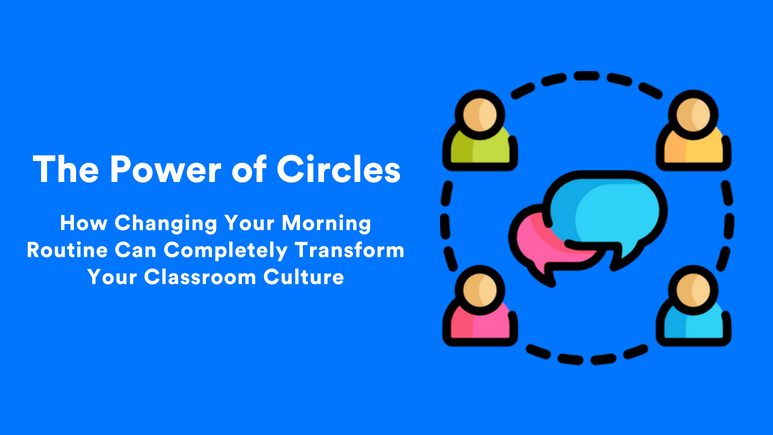
Most school mornings tend to start the same way.
Students filter into the classroom. They find their seats and take out their homework. The teacher might make some announcements, and then everyone jumps right into learning.
A fine way to start the day, no?
Well, what if we told you that some teachers spend as much as 30 minutes with students in the morning before jumping into academic content? And believe it or not… the payoffs are huge!
What could possibly be so valuable that it warrants disrupting a perfectly efficient morning routine?
Circles.
Also known as Morning Meeting, Advisory, or a dozen other localized names, this way to start the day can have powerful impacts on classroom culture and student performance.
The Benefits of Circles
There are a plethora of benefits that holding a daily morning meeting can generate.
Teachers who regularly use morning meetings in their classroom have reported that students typically:
- Are more respectful and caring towards their peers,
- Have fewer behavior issues throughout the day,
- Develop important communication skills,
- Are more engaged in learning,
- Are better able to cope with their feelings in productive ways, and
- Feel that they are part of a community
Additionally, studies have shown that classrooms that implement responsive classroom techniques including circles even see above-average improvements in student math and reading scores.
When class time is limited and stakes are high, it can be tempting to jump directly into instruction every day.
That said, the initial time investment in running a daily morning meeting will pay dividends in a number of ways.
Running a Circle
While there’s no one right way to use this community building technique, there are a few generally agreed-upon basics.
Students should sit in a circle. This can be on a carpet for younger students or in their desks for older ones, but it’s important to create a space where students are facing one another.
Does the thought of having your students move their desks at the start of every day make you cringe? Just go for it – we promise it will go smoother than you think.
Have a talking piece. Whether it’s a stuffed animal or just a whiteboard marker, it’s important to start with an object that signifies whose turn it is to talk.
This helps make the circle feel like a sacred space. Only the student holding the talking piece should be speaking. Eventually, you can ditch the talking piece once students get the hang of taking turns.
Set norms. From day one it’s important to set expectations for the circle. Only one student at a time can talk. All eyes should be on the speaker. If you don’t want to share, you can “pass”.
Build routines. Most morning meetings include a greeting, an opportunity to share or check-in about how each person is feeling, and a mini-discussion or group activity.
That said, there are no firm rules, so it’s fine to do what works for you and your students.
Not sure how these pieces all look together? Check out videos here and here to see different examples of circles in action.
Keeping it Fun
Once your students get a knack for circles, they’ll look forward to it as an important and integral part of their day.
Most teachers who come to use this community building technique will use it for an entire year.
So how can you keep things fresh for 180 consecutive school days?
There are tons of online resources for different topics of conversation or share-outs.
Also, as students get more comfortable with the format of circles, you can start to give students the job of planning and running them.
Print out a blank calendar template and have students sign up for a given day.
Students are then responsible for starting the circle, posing a discussion or share-out question, and making any announcements.
This last step of taking ownership can further build investment in the process and deepen the ties your students have to their class community.
If you’ve used circles before in your classroom, we’d love to hear your tips or ideas in the comments below!



Leave a Reply